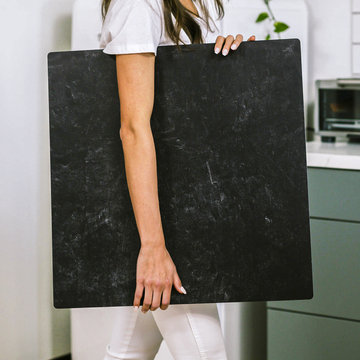When you think of backdrops in product photography, it’s easy to focus on color and pattern. But did you know the way your surface actually feels-its micro-texture-can have a dramatic impact on your final image? This tiny detail rarely gets the spotlight, yet it holds the power to transform your work from flat to fabulous.
Let’s step beyond the basics and explore why the finish and feel of your backdrop matter just as much as what’s front and center in your shot. If you want sharper, cleaner, and more memorable product images, this is where science meets artistry.
What’s Micro-Texture, and Why Should You Care?
Micro-texture refers to those barely visible peaks and valleys on your backdrop’s surface-the fine grit or gloss that changes the way it interacts with light. While most creators talk about color and composition, seasoned photographers know that these microscopic features alter everything from reflections to color accuracy and depth.
- Matte backdrops scatter light, producing soft, even illumination and preventing ugly hotspots, especially with shiny or metallic products.
- Glossy backdrops reflect light more like a mirror, introducing dramatic highlights and a sense of luxury-great for items like watches or perfume bottles.
- Semi-gloss surfaces offer a middle ground, letting you balance depth and shine.
Edit Your Backdrop, Not Just Your Photo
Here’s what many overlook: the very same colored backdrop can shift your product’s colors, all thanks to its surface finish. If you’re photographing ceramics, artisan goods, or anything with subtle tones, the micro-texture can either warm up or cool down your shadows-sometimes enough to affect how customers perceive your product’s true color.
- Test your product on a matte white versus a glossy white-notice any changes in undertones?
- Consistent lighting with inconsistent surfaces will still introduce color drift. Don’t let your “neutral” backdrops become wild cards.
Size Matters: Matching Texture to Subject
Think detail shots of jewelry, or close-ups of cosmetics. If the texture of your surface is too coarse for a tiny product, it quickly becomes a distraction. Matching the scale of your backdrop’s grain to your subject helps your product stay the star of the show without visual competition.
Get Creative with Light and Polarization
Advanced lighting techniques can interact in surprising ways with your chosen surface. If you work with cross-polarized light to eliminate glare, rough matte backdrops will absorb stray reflections to create a smooth, almost shadowless effect. Highly polished surfaces, on the other hand, keep crisp, intentional highlights for dramatic definition.
Keep It Clean: The Hygiene Factor
Micro-texture isn’t just about first impressions. Highly textured backdrops can hold onto dust and oils, gradually altering both their look and how they reflect light. For consistent, brand-true visuals, make cleaning your surfaces a regular part of your workflow-not just an afterthought.
Backdrops Are Tools-Not Just Backgrounds
The most successful product photographers consider their backdrops as carefully as they do their cameras or lighting. Rather than being a passive support, that surface is an active partner in your image-a subtle but powerful influence on mood, color, and clarity.
- Feel the surface before you start. How will those tiny details shape your light?
- Assess both the color and the finish before every shoot, especially for color-critical brands.
- Experiment: try the same product on a range of surfaces with identical lighting, and compare for softness, color, and vibrancy.
Challenge: Put Micro-Textures to the Test
Curious what you’re missing? Run this quick experiment:
- Shoot the same product on several backdrops, varying only the surface finish.
- Keep lighting and camera settings identical.
- Zoom in, review color shifts, reflections, and perceived depth.
You’ll soon realize the simplest tweak-choosing a backdrop for its tactile properties-might be the finishing touch your product imagery has needed all along.
Ready to level up your photo game? The next time you pick a backdrop, look beyond color and pattern. Start thinking surface, and let micro-texture work its quiet magic on your photography.


